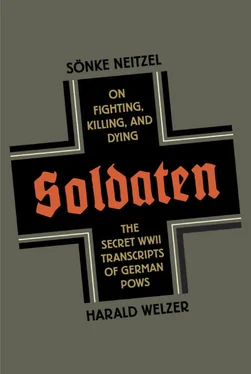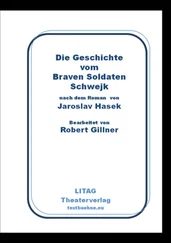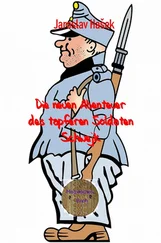Where survival is at stake, cultural baggage weighs heavy and occasionally proves fatal. Or put the matter differently: in all these examples, the main problem is perceived not as a threat to individual survival, but as a danger to established, symbolic, inviolable rules of behavior and status. A danger of this sort can appear so grave to those concerned that no way out is visible. In this sense, people can become victims of their own techniques for survival.
History itself is not perceived. History happens. Only in retrospect do historians determine which events from a massive inventory of possibilities were “historical,” i.e., significant for the eventual way things turned out. Everyday consciousness rarely registers gradual changes of social and physical environment because perception constantly readjusts itself in line with changes in its various environments. Psychologists call this phenomenon “shifting baselines,” and examples such as the recent changes in our communicative habits or the radical alteration of normative standards under Nazism show how powerful they can be. In both examples, people were under the impression that everything had basically stayed the same, even though fundamental change had occurred.
Only in retrospect does a slow process, at least one perceived as slow, such as the breakdown of civilization, congeal into an abrupt event. That happens when people realize that a development has had radical consequences. The interpretation of what people perceived within a process that later turned into a catastrophe is a very tricky enterprise—not least because we pose our questions of what people knew with our own hindsight as to how things turned out. Historical actors, of course, possessed no such knowledge. We view history from the end to the beginning and are forced to suspend our own historical knowledge in order to say what people knew at any specific historical juncture. For that reason, Norbert Elias has proposed that reconstructing what people did not or could not have known is one of the most difficult tasks of social science. {11} 11 Norbert Elias, Was ist Soziologie? (Munich: Juventa, 2004).
Or to use the terminology of historian Jürgen Kocka, we could describe this task as the “liquification” of history, the conversion of facts back into possibilities. {12} 12 Cited in Rolf Schörken, Luftwaffenhelfer und Drittes Reich: Die Entstehung eines politischen Bewusstseins (Stuttgart: Klett-Cotta Verlag, 1985), p. 144.
On August 2, 1914, Franz Kafka in Prague wrote in his diary: “Germany declared war on Russia—afternoon: swimming lessons.” This is just one particularly prominent example of events that later observers learn to see as historic not being perceived as such in the real time in which they come together. Indeed, if such events are even registered, it is as a part of everyday life, in which a variety of things are perceived and compete for people’s attention. Even an exceptionally intelligent individual like Kafka can find the outbreak of a war no more noteworthy than a swimming lesson later in the day.
From a historical perspective, one can say that the groundwork for a war of annihilation had been laid long before the German army attacked the Soviet Union on June 22, 1941. At the same time, it is doubtful that the soldiers who received their orders that morning truly realized what sort of a war they faced. They expected to make lightning-quick advances, as had been the case in Poland, France, and the Balkans, and not to wage a murderous frontline campaign with previously unprecedented ferocity. Moreover, there was even less reason for them to anticipate that in the course of the war groups of people that had no immediate connection with the hostilities would be systematically eliminated. The frame of reference “war,” as it had been previously known, did not presume anything like that.
For the same reason, many Jewish Germans did not recognize the dimensions of the process of exclusion of which they would become the victims. Instead many viewed Nazi rule as a short-term phenomenon that “one will have to get through, or a setback that one could accept, or at the worst a threat that restricted one personally, but that was still more bearable than the arbitrary perils of exile.” {13} 13 Raul Hilberg, Täter, Opfer, Zuschauer: Die Vernichtung der Juden, 1933–1945 (Frankfurt/Main: Fischer, 1992), p. 138.
The bitter irony in the case of Jews was that while past discrimination meant their reference frame did indeed encompass anti-Semitism, persecution, and larceny, it also rendered them unable to see that what was happening in the Third Reich was of a different, absolutely deadly order.
TEMPORALLY SPECIFIC CONTEXTS OF PERCEPTION
On June 2, 2010, in the German town of Göttingen, three bomb squad specialists lost their lives in an attempt to defuse an unexploded bomb from World War II. German media reported extensively on the accident, and it caused a considerable outpouring of sympathy. Yet if the bomb had killed three people in 1944 or 1945, when it was actually dropped, it would have attracted little attention beyond the immediate families of the men killed. During wartime, such deaths were nothing unusual. In January and February 1945, some one hundred residents of Göttingen were killed in bombing raids. {14} 14 Martin Heinzelmann, Göttingen im Luftkrieg (Gottingen: Die Werkstatt, 2003).
Historically speaking, violence has been enacted and experienced in very different ways. The extraordinary abstinence from violence in modern society, the fact that the public and to a lesser degree the private spheres are relatively free from force, is the result of the civilizing influence of separation of state powers and the state’s monopoly on the legitimate use of force. These achievements have allowed for the enormous sense of security that is an integral part of modern societies. In premodern periods, people were far more likely to become the victims of direct physical violence than now. {15} 15 Norbert Elias, Studien über die Deutschen (Frankfurt/Main: Suhrkamp, 1989).
Violence was also far more present in the public sphere, for example, in the form of public punishments and executions. {16} 16 Michel Foucault, Überwachen und Strafen (Frankfurt/Main: Suhrkamp Verlag, 1994).
It is therefore reasonable to assume that the frames of reference and the experiences of committing and suffering violence varied throughout history.
ROLE MODELS AND RESPONSIBILITIES
As discussed earlier, roles make up an extensive social arena, especially in modern, functionally differentiated societies, and each type of role brings with it a certain set of responsibilities for those who choose or are forced to play it. Roles represent an intermediate level between cultural ties and responsibilities, and group-specific and individual interpretation and action. Within many roles, we may not even be aware that we are acting according to their standards, although it is obvious that we in fact are. They include all the roles sociologists use to differentiate between societies: roles of gender, age, social origin, and education. The sets of responsibilities and norms they entail are consciously perceived and questioned only in exceptional cases. Nonetheless, such self-evident, everyday roles influence our perception, interpretation, and behavioral options, while they themselves, as is especially the case with gender and age, are subject to normative rules. People expect a different sort of behavior from an elderly lady than from a young male, even though there is no specific catalogue of dos and don’ts, to say nothing of laws. As members of society, all of us “know” such rules implicitly.
Читать дальше












